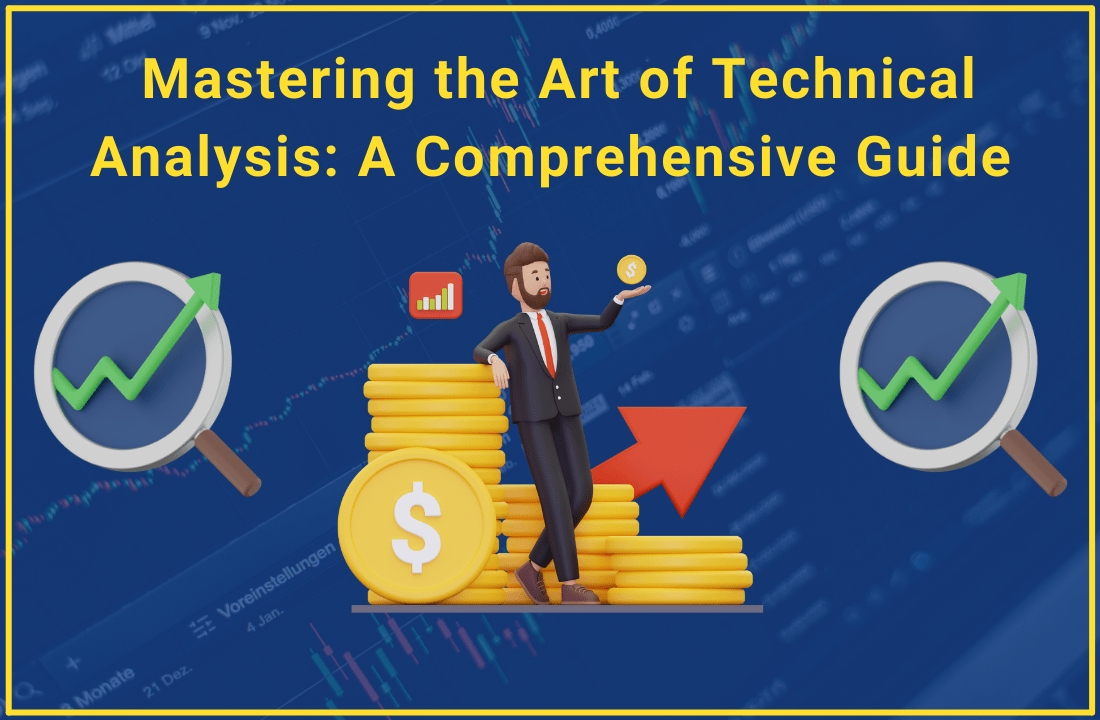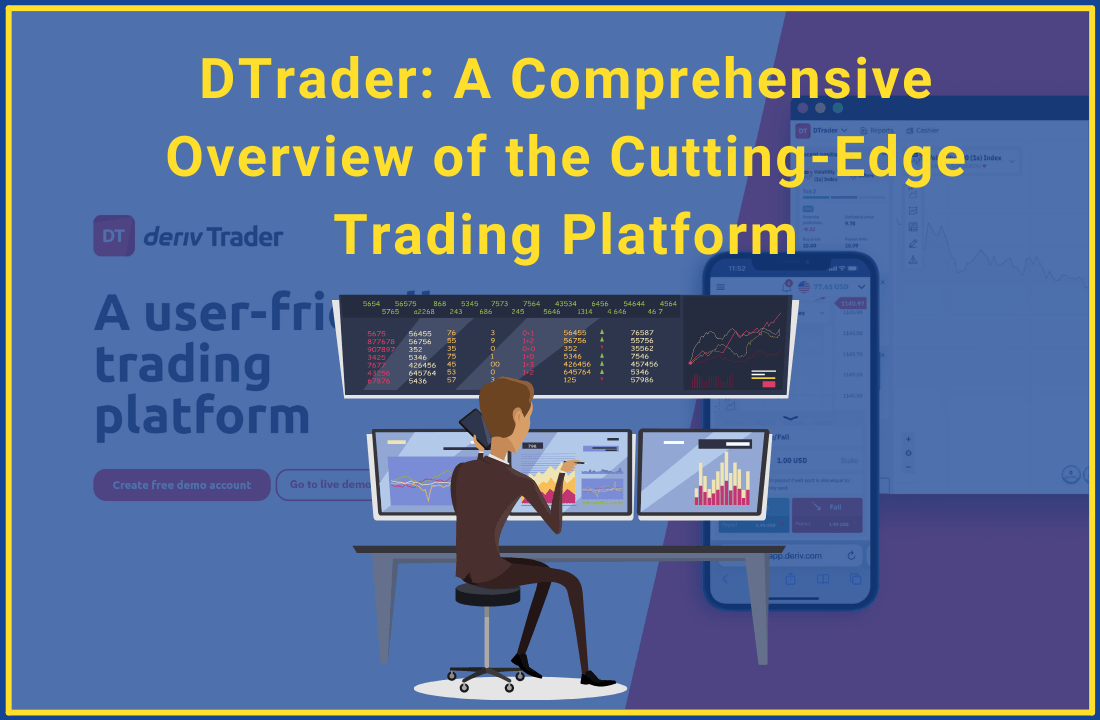Introduction to Technical Analysis
In the dynamic world of trading, a thorough understanding of market trends and patterns is essential for making informed decisions. This is where technical analysis steps in as a powerful tool that allows traders to dissect price movements and forecast potential future trends. In this blog, we’ll delve deep into the world of technical analysis, unraveling its principles, tools, chart patterns, and more, to equip you with the knowledge to enhance your trading strategies.
Principles of Technical Analysis
At its core, technical analysis involves studying historical price data to predict future price movements. This practice is built on several key principles. Market behavior and trends form the foundation of technical analysis. Traders recognize the importance of identifying trends – uptrends, downtrends, and sideways trends – as they provide valuable insights into potential market movements.
Support and resistance levels are critical touchstones in technical analysis. Support acts as a price level where demand is strong enough to prevent further decline, while resistance is a level where supply is enough to stall price increases. By identifying these levels, traders can anticipate potential turning points in the market.
Price patterns and chart formations, like the famous head and shoulders or the bullish pennant, provide traders with signals about potential trend reversals or continuations. These patterns serve as visual representations of market psychology and can significantly aid in decision-making.
Tools and Indicators
Technical analysis employs a variety of tools and indicators to aid traders in their analysis. Moving averages are widely used to smoothen out price data, revealing underlying trends more clearly. The Relative Strength Index (RSI), Bollinger Bands, and the Moving Average Convergence Divergence (MACD) are all valuable indicators that provide insights into market momentum, volatility, and potential buy/sell signals.
Chart Types
Different chart types offer varying levels of detail and insights. Line charts provide a simplified view of price movements, while bar charts display open, high, low, and closing prices. The candlestick chart, however, is a trader’s best friend, offering comprehensive insights into price action, trend direction, and market sentiment. Renko charts, based solely on price movements, are excellent for filtering out market noise.
Dow Theory and Technical Assumptions
The Dow Theory, established by Charles Dow, laid the foundation for modern technical analysis. It emphasizes the importance of studying market trends to make informed trading decisions. This theory challenges the Efficient Market Hypothesis, which posits that all available information is already reflected in asset prices. While not foolproof, technical analysis can unveil psychological factors influencing price movement that aren’t entirely captured by fundamental analysis.
Trend Analysis
Identifying trends is the heart of technical analysis. Trends have different phases – the uptrend, downtrend, and sideways trend – each providing unique trading opportunities. Trendlines and channels help traders visualize and validate trends, while Fibonacci retracements and extensions provide potential price targets based on historical price movements.
Support and Resistance Analysis
Support and resistance levels play a crucial role in technical analysis. These levels often act as turning points for price movements. The role reversal principle is based on the idea that once a resistance level is breached, it becomes a support level, and vice versa. Pivot points, calculated using previous high, low, and close prices, offer additional insights into potential price action.
Chart Patterns
Chart patterns are the heartbeat of technical analysis, offering clear signals for traders. Reversal patterns, such as head and shoulders and double tops/bottoms, indicate potential trend reversals. Continuation patterns, like flags, pennants, and triangles, suggest that the existing trend is likely to continue.
Oscillators and Momentum Indicators
Oscillators and momentum indicators help traders gauge the strength and speed of price movements. The stochastic oscillator and momentum indicator are two such tools that provide insights into overbought or oversold conditions, allowing traders to identify potential turning points.
Volume Analysis
Volume analysis validates price movements. High volume during a trend suggests strong market participation, while low volume may indicate weak conviction. On-Balance Volume (OBV) and Volume Price Trend (VPT) are indicators that help traders interpret volume data.
Moving Averages and Crossovers
Moving averages smooth out price data, providing a clearer view of trends. The golden cross, where a short-term moving average crosses above a long-term moving average, indicates a potential bullish signal. Conversely, the death cross, where a short-term moving average crosses below a long-term moving average, suggests a potential bearish signal.
Japanese Candlestick Patterns
Japanese candlestick patterns are a treasure trove of information. Single candle patterns, such as the doji, hammer, and shooting star, offer insights into potential reversals. Two-candle patterns like engulfing and harami provide even more comprehensive signals.
Applying Technical Analysis in Trading
Implementing technical analysis in trading involves honing entry and exit strategies. Risk management and position sizing are critical to ensure capital preservation. While technical analysis is powerful, integrating fundamental analysis can provide a more holistic view of market conditions.
Back testing and Pattern Recognition
Backtesting involves testing trading strategies on historical data to assess their effectiveness. With technology, pattern recognition tools can help identify potential chart patterns automatically, saving time and increasing efficiency.
Pitfalls and Limitations
Technical analysis is not without its pitfalls. Overfitting and false signals can lead to poor trading decisions. External factors and black swan events, like unexpected market-moving news, can disrupt even the most meticulously crafted technical analyses.
Psychological Aspects of Technical Analysis
Emotional control is vital when employing technical analysis. Dealing with confirmation bias, where traders tend to favor information that confirms their existing beliefs, requires self-awareness and discipline. Patience is essential as markets don’t always behave predictably.
Real-World Case Studies
Examining successful trades and learning from failed predictions helps traders refine their technical analysis skills. These case studies demonstrate both the potential rewards and the inherent risks of relying on technical analysis.
The Debate: Technical Analysis vs. Fundamental Analysis
The debate between technical and fundamental analysis rages on. Each approach has its advantages and disadvantages. Combining both can lead to more informed trading decisions, leveraging the strengths of each approach.
Summary: The Power of Technical Analysis
In this comprehensive guide, we’ve covered the fundamental principles, tools, and strategies of technical analysis. By grasping these concepts, you’ve unlocked a powerful toolset that can significantly enhance your trading prowess. Remember, technical analysis isn’t a crystal ball, but it’s a valuable resource that, when used wisely, can guide you toward more informed trading decisions.
FAQs about Technical Analysis in Trading
1. The primary goal of technical analysis is to predict future price movements based on historical data and patterns.
2. While technical analysis is often associated with shorter-term trading, it can also provide insights for long-term investments.
3. Emotional control is paramount for effective technical analysis. Letting emotions dictate decisions can undermine its effectiveness.
4. Relying solely on technical analysis can lead to blind spots. It’s crucial to consider fundamental factors and external events.
5. Beginners can start learning technical analysis by studying chart patterns, indicators, and practicing on historical data with backtesting tools.










